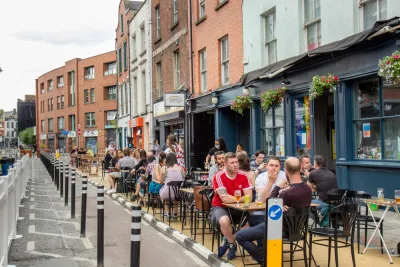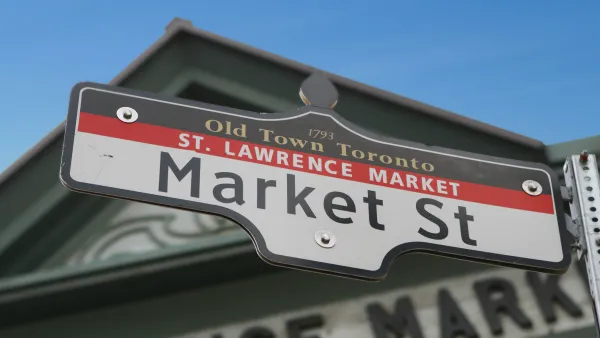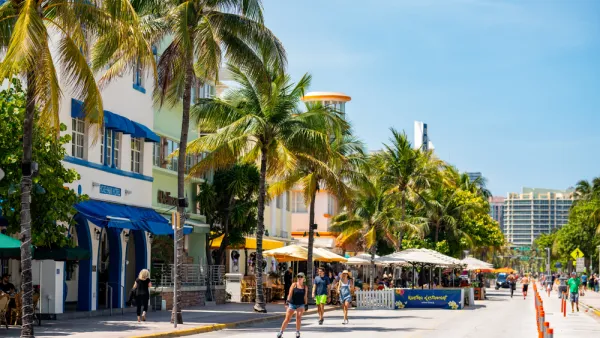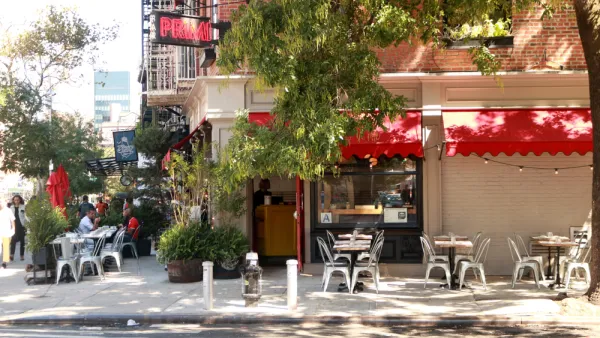While some open streets experiments have met with backlash from community members, others were so successful they led to permanent changes.

An article by Maylin Tu in Next City expounds on the benefits of car-free streets, which got a shot in the arm during the Covid-19 pandemic and, in some cities, are having lasting impact.
Tu lists the common arguments against open streets and the evidence debunking them, going on to describe four cities where open streets experiments are still going strong. “Car-free advocates would say that as greenhouse gas emissions and traffic violence go down, happiness and connection go up — it’s hard to connect with your neighbors while ensconced in two tons of steel.”
The four featured projects: San Francisco’s John F. Kennedy Drive, which winds through Golden Gate Park and has been closed to cars on Sundays since 1967; Griffith Park Drive in Los Angeles, which was closed to cars after the death of a cyclist in April; 34th Avenue in New York City, which, although not permanently closed to vehicle traffic, hosts a vibrant community of events and classes during daytime hours; and Dublin’s Capel Street, now the longest car-free street in Ireland.
Tu points out that well before the pandemic, cities like Paris, Bogotá, and São Paulo were experimenting with projects like car-light or car-free streets, open streets events, and parklets, but the success of pandemic-era programs has, in some cases, accelerated efforts to reclaim public right-of-way from cars.
FULL STORY: In These Cities, Car-Free Streets Are Here To Stay

National Parks Layoffs Will Cause Communities to Lose Billions
Thousands of essential park workers were laid off this week, just before the busy spring break season.

Retro-silient?: America’s First “Eco-burb,” The Woodlands Turns 50
A master-planned community north of Houston offers lessons on green infrastructure and resilient design, but falls short of its founder’s lofty affordability and walkability goals.

Delivering for America Plan Will Downgrade Mail Service in at Least 49.5 Percent of Zip Codes
Republican and Democrat lawmakers criticize the plan for its disproportionate negative impact on rural communities.

Test News Post 1
This is a summary

Test News Headline 46
Test for the image on the front page.

Balancing Bombs and Butterflies: How the National Guard Protects a Rare Species
The National Guard at Fort Indiantown Gap uses GIS technology and land management strategies to balance military training with conservation efforts, ensuring the survival of the rare eastern regal fritillary butterfly.
Urban Design for Planners 1: Software Tools
This six-course series explores essential urban design concepts using open source software and equips planners with the tools they need to participate fully in the urban design process.
Planning for Universal Design
Learn the tools for implementing Universal Design in planning regulations.
EMC Planning Group, Inc.
Planetizen
Planetizen
Mpact (formerly Rail~Volution)
Great Falls Development Authority, Inc.
HUDs Office of Policy Development and Research
NYU Wagner Graduate School of Public Service





























